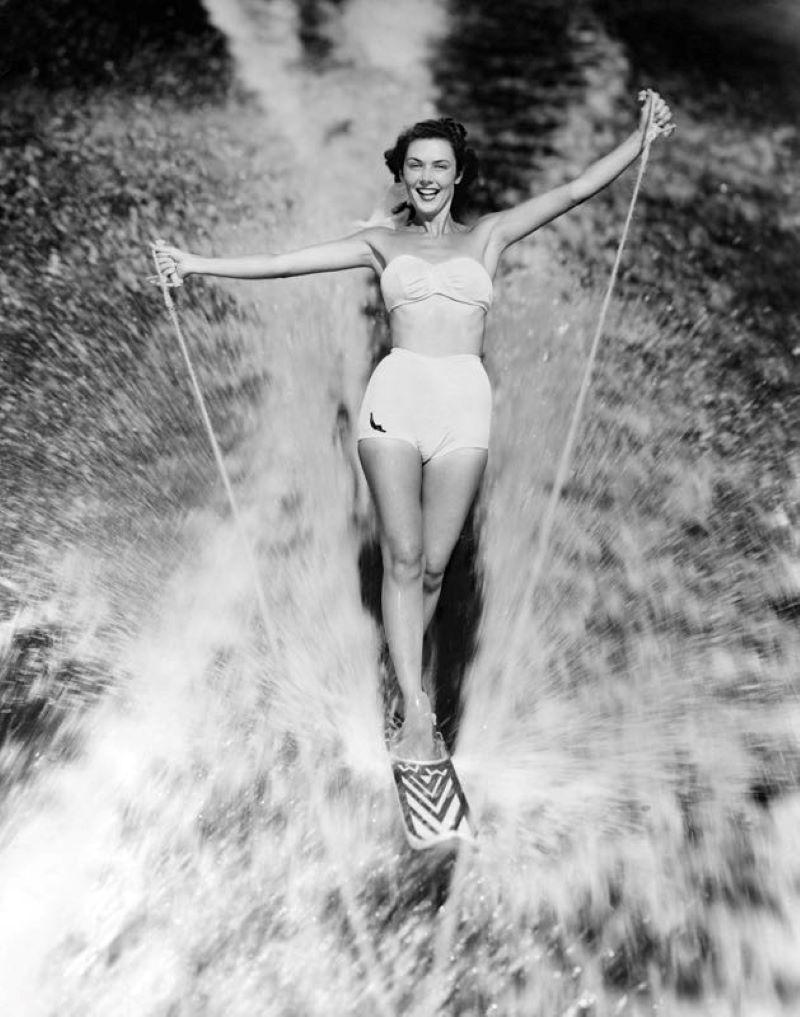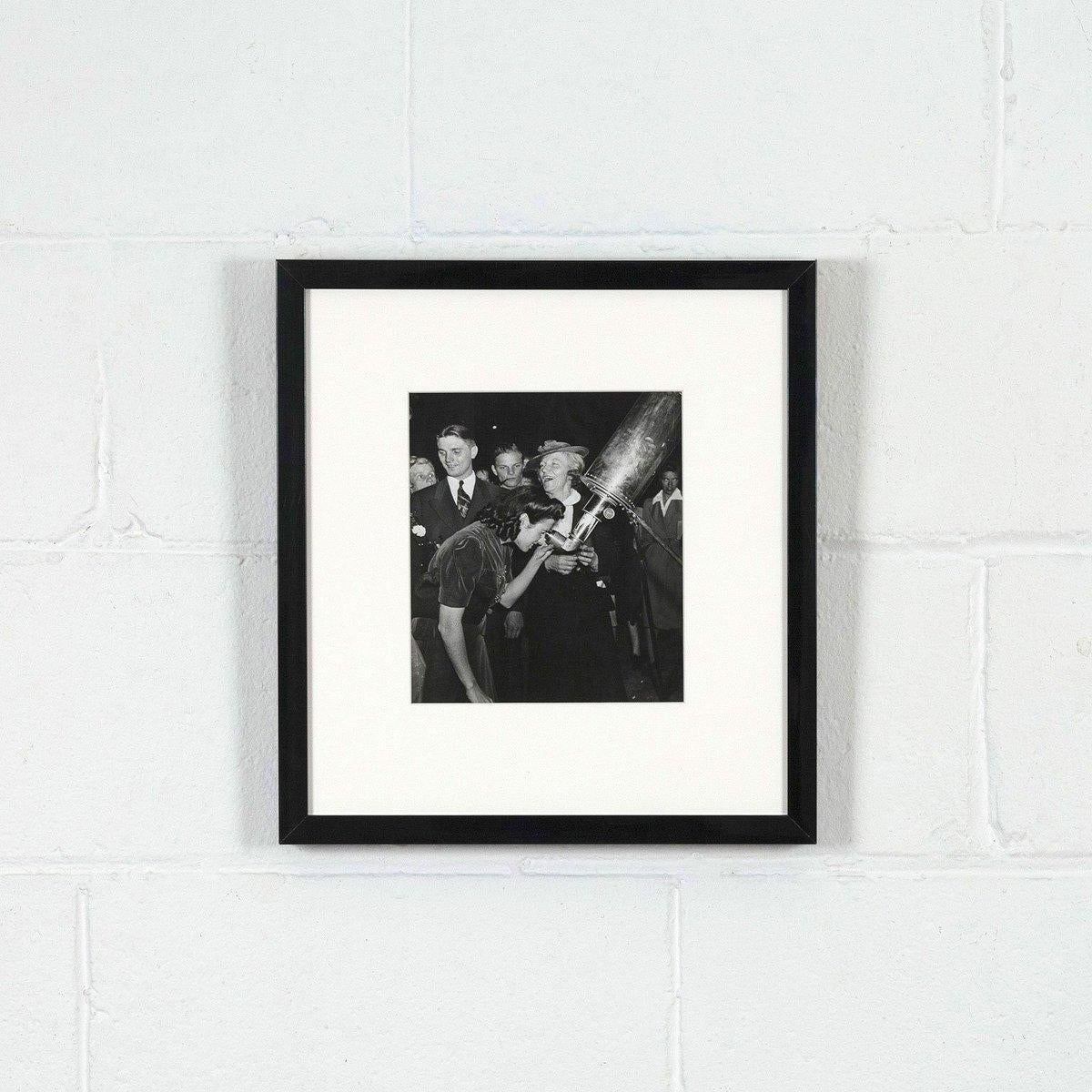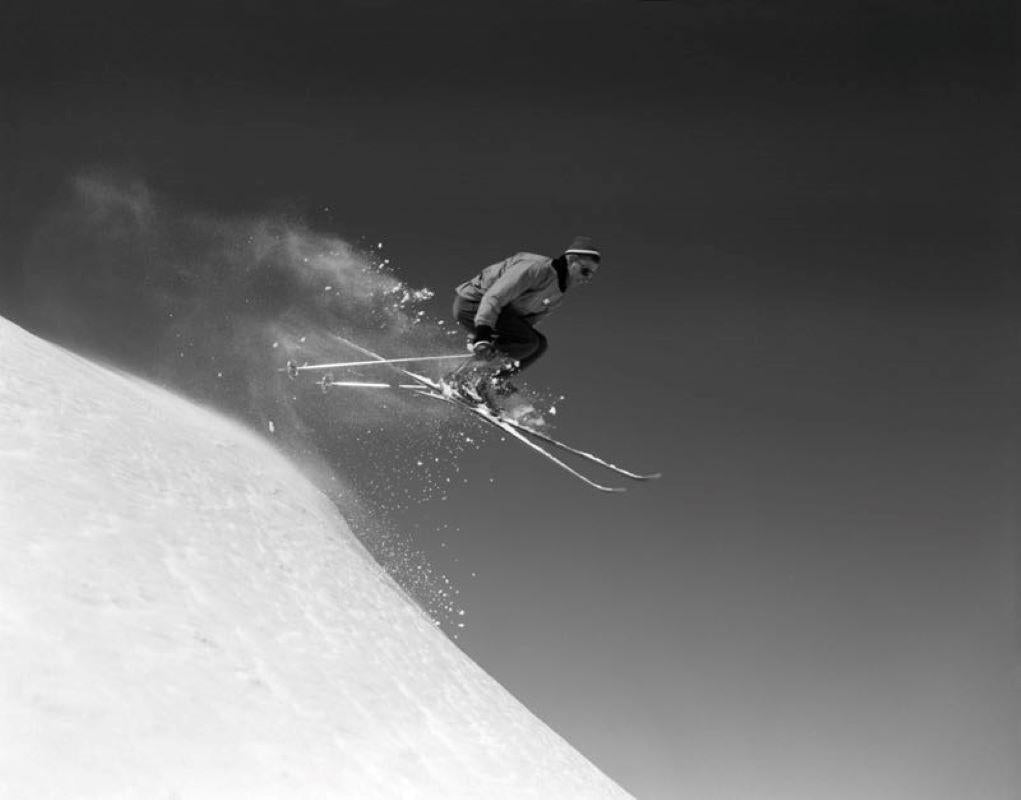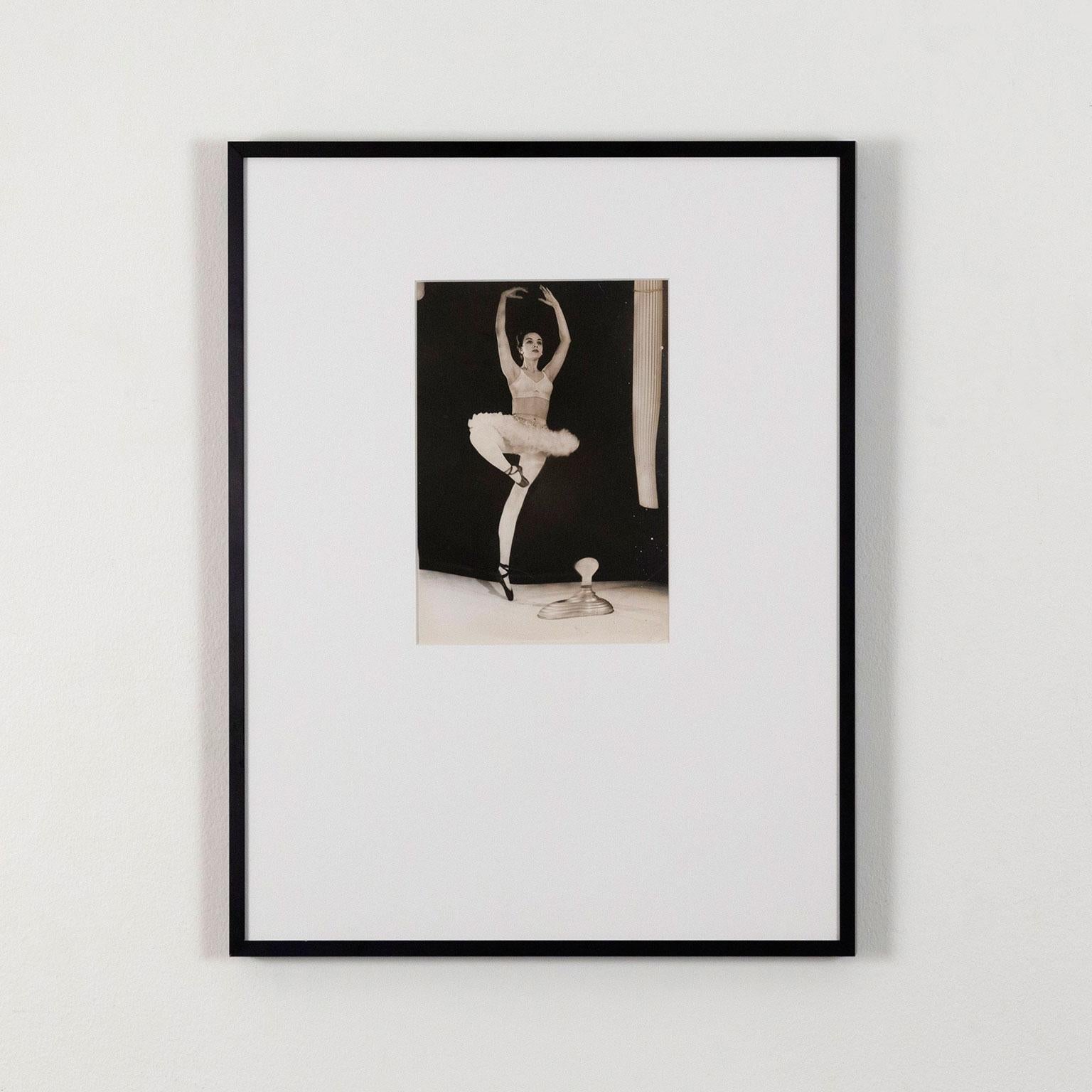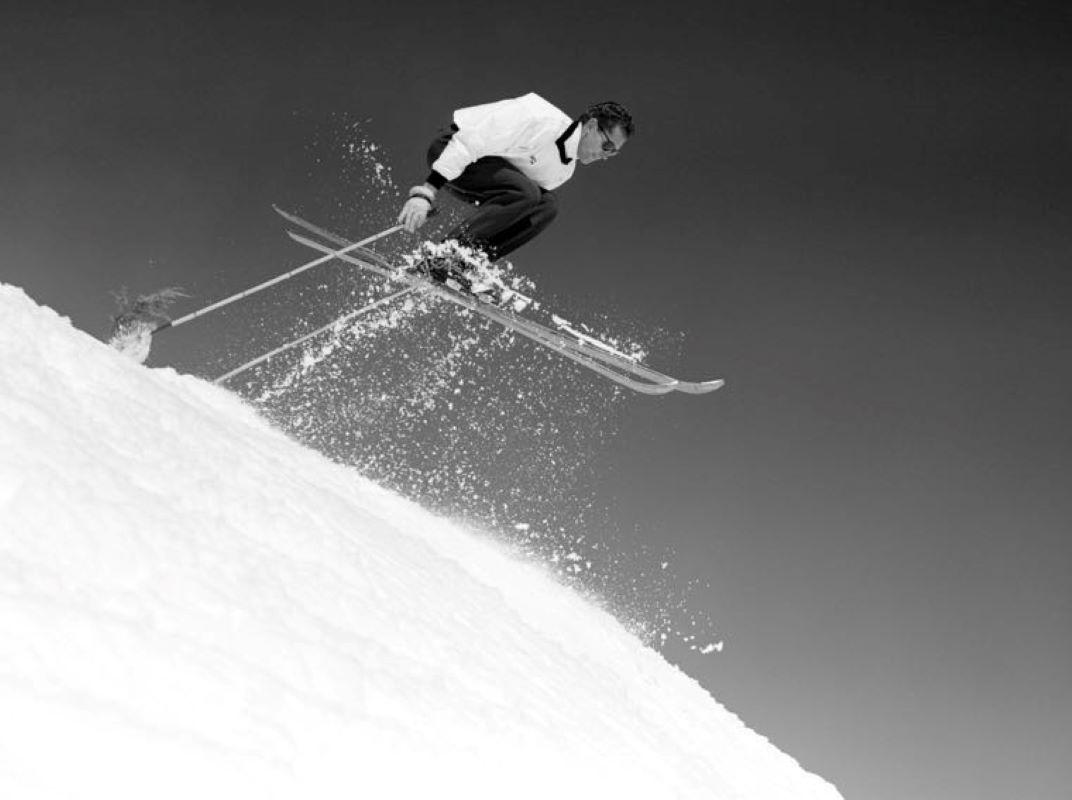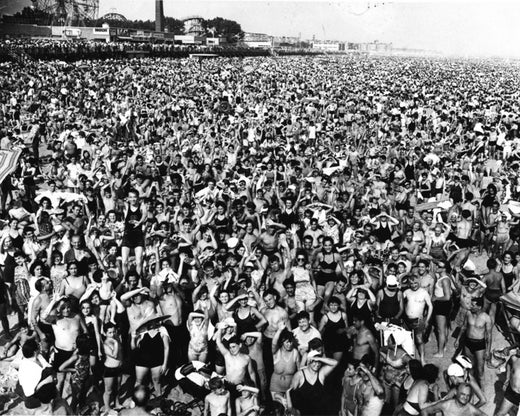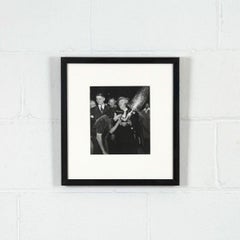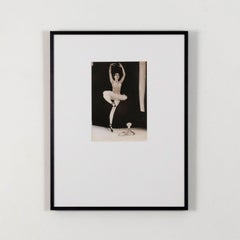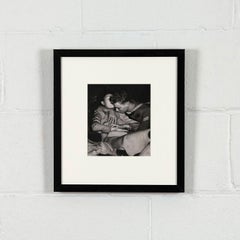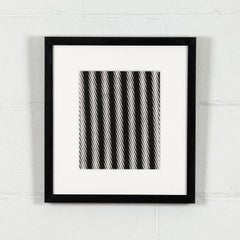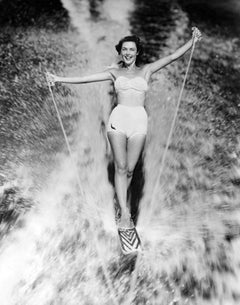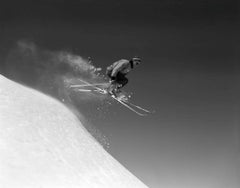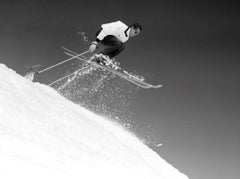Items Similar to Waterski Jumper
Want more images or videos?
Request additional images or videos from the seller
1 of 9
WeegeeWaterski Jumper1950
1950
$3,500
£2,645.57
€3,040.23
CA$4,873.73
A$5,421.82
CHF 2,842.19
MX$66,253.36
NOK 36,191.71
SEK 34,069.49
DKK 22,694.13
Shipping
Retrieving quote...The 1stDibs Promise:
Authenticity Guarantee,
Money-Back Guarantee,
24-Hour Cancellation
About the Item
Arthur Felling, better known as Weegee (1899-1968) is America's premiere photojournalist and one of the last century's most influential photographers.
He would become famous, beyond New York and news circles, after the publication of his photo books Naked City (1945) and Weegee's People (1946).
Weegee's images of New York City crime, disaster, and tragedy are frequently iconic and highly influential. Less well-known, however, is the work he focused on during the last twenty years of his life: known as the 'distortions' period. In the late 1940s, Weegee began experimenting with photographic manipulation both in the darkroom and using an array of filters, many of which were his own invention, on his camera.
Weegee created distortions of a wide range of subjects; celebrities, architecture, circus life, and nudes. Of course, one of the overarching themes of his work was the idea of spectacle.
In this evocative distortion, the photograph has been split directly down the center and reflected. It's impossible to tell which side of the image is the original and which side is the reflection.
The dynamic image features two waterskiers, one suspended in the air mid-jump, while the other touches down, prompting a spray of water upon impact. This brief moment of daring motion is distorted into an almost perfectly symmetrical image, with limbs and perspective lines converging at the center for an almost Op Art effect.
Weegee’s photography can be found in scores of museums and private collections worldwide: the J. Paul Getty Museum, Los Angeles; Museum of Modern Art, New York; San Francisco Museum of Modern Art; Museum of Modern Art, Oxford; Museum of Contemporary Art, Los Angeles; International Center of Photography, New York and more.
Questions about this piece? Contact us.
Untitled "Waterski Jumper"
USA, 1950
Gelatin silver print
Stamped verso
8.25"H 4.75"W (work)
14.5"H 10.5"W (framed)
Framed with museum glass
Detailed condition report by request. Overall very good condition
- Creator:Weegee (1899-1968, American)
- Creation Year:1950
- Dimensions:Height: 8.25 in (20.96 cm)Width: 4.75 in (12.07 cm)
- Medium:
- Movement & Style:
- Period:
- Condition:Very good condition.
- Gallery Location:Toronto, CA
- Reference Number:Seller: 07-231stDibs: LU215212705592
Weegee
Arthur Fellig, who later assumed the pseudonym Weegee, was a photographer and photojournalist, best known for his gritty black-and-white imagery taken on the streets of New York City. Born in 1899 in what is now the Ukraine, he arrived in the United States with his family in 1909, and settled in Brooklyn. After working in a variety of photography-related jobs, he struck out on his own at the age of 35 as a self-taught freelance photographer, selling his work to publications like the Herald Tribune, the Daily News, the Post, and the Sun. Weegee worked mostly at night, usually around Manhattan Police Headquarters. He was the only freelancer in New York to obtain permission to install a police radio in his car. As a result, he was often the first to arrive at the scene of the many crimes he photographed, often before the police themselves had responded. Moreover, he traveled with a makeshift darkroom in the trunk of his car, so he could produce, and then sell, his images faster than his competitors. But crime was not his only subject. He also photographed socialites at high-society events, circus performers, street life, tenement housing conditions, and many other facets of New York life. For a number of years he traveled extensively in Europe, and worked for the London Daily Mirror. He later returned to New York City, where he died in 1968. Th Museum of Modern Art began collecting his work in 1943, and featured it in several exhibitions. His work was also shown at the New York Photo League, and the International Center of Photography hosted a retrospective of his work in 1998. He has been featured in exhibitions at European venues such as the Kunsthalle Vienna, Austria's Flatz Museum, and the Multimedia Art Museum in Moscow. Several monographs of his work have been published.
About the Seller
4.8
Vetted Professional Seller
Every seller passes strict standards for authenticity and reliability
Established in 2009
1stDibs seller since 2015
195 sales on 1stDibs
Typical response time: 2 hours
- ShippingRetrieving quote...Shipping from: Toronto, Canada
- Return Policy
Authenticity Guarantee
In the unlikely event there’s an issue with an item’s authenticity, contact us within 1 year for a full refund. DetailsMoney-Back Guarantee
If your item is not as described, is damaged in transit, or does not arrive, contact us within 7 days for a full refund. Details24-Hour Cancellation
You have a 24-hour grace period in which to reconsider your purchase, with no questions asked.Vetted Professional Sellers
Our world-class sellers must adhere to strict standards for service and quality, maintaining the integrity of our listings.Price-Match Guarantee
If you find that a seller listed the same item for a lower price elsewhere, we’ll match it.Trusted Global Delivery
Our best-in-class carrier network provides specialized shipping options worldwide, including custom delivery.More From This Seller
View AllWeegee "A Trip to Mars"
By Weegee
Located in Toronto, Ontario
While many first associate Weegee (aka Arthur Fellig) with New York City crime scenes, perhaps a broader and more consistent theme is that of spectacle and/or urban entertainment.
The origins of his nick-name and reputation date back to the 1930s when he became the first New York City press photographer to obtain permission to install a police radio in his car. Following the city's first responders and documenting their duties, Weegee had unprecedented access to New York’s fires, crimes, debaucheries and of course, murders.
During the first decade of his career these unflinching urban tragedy or crime images paid Weegee's bills, but as he became more financially independent he was more inspired to pursue photographs on his own agenda. While his oeuvre is vast, Weegee was especially drawn to entertainment: nightlife, circuses, the theatre, showgirls, city thrills, the cinema etc.
Some of Weegee's most dynamic and tender (and under-appreciated!) images are related to simply having fun (in a crowd). He was not confined to one neighbourhood or demographic. He captured action, faces and events from Coney Island to the Bowery and Greenwich Village, to Times Square and Harlem.
In “A Trip To Mars,” Weegee depicts a multi-generational group crowding around a large telescope...
Category
1940s American Modern Black and White Photography
Materials
Silver Gelatin
Ballerina
By Weegee
Located in Toronto, Ontario
Arthur Felling, better known as Weegee (1899-1968) is America's premiere photojournalist and one of the last century's most influential photographers.
He would become famous, beyond...
Category
1950s Modern Black and White Photography
Materials
Silver Gelatin
Weegee "Sailor and Girl Kissing"
By Weegee
Located in Toronto, Ontario
Weegee (1899-1968) was equally fascinated and inspired by cinema and all of its tangents, from Hollywood movie stars to ordinary civilians going to the movies. While Weegee is typically associated with crime/disaster images, the broad theme of "entertainment" is a major component of his oeuvre.
An interesting and provocative sub-genre of his cinema-related work are his images of couples (often heavy-petting) in movie theatres.
Recent scholarship has established that many of Weegee's supposed clandestine images were actually staged or arranged with friends or co-operative strangers.
Nevertheless, Weegee created these photographs in the dark with an array of clever techniques including infrared film, filtered flashbulb and triangular prism lens. Employed in shots such as this one, the prism lens would allow the artist to “see around corners,” useful at times when his subjects were in compromising locations.
These images of kissing couples, Weegee wrote in 1959, were “his best seller, year in and year out.”
"Sailor and GIrl at the Movies...
Category
1940s American Modern Black and White Photography
Materials
Silver Gelatin
Weegee "Distortion: Stripes"
By Weegee
Located in Toronto, Ontario
Innovative, provocative, inimitable - these are just a few of the words to describe America's boldest photographer.
Arthur Fellig, better known as Weegee (1899-1968) was a ground-breaking, successful (and notorious) photojournalist. His images shot on the streets of New York City are iconic and influential.
In the 1930s he became the first New York City press photographer to obtain permission to install a police radio in his car. This allowed him to follow the city's first responders and to document their duties; responding to fire, crime, debauchery and of course, murder.
By the early 1940s Weegee was experiencing fatigue with crime reportage. Ironically, this was also the point when he finally began experiencing professional validation and acclaim, to the point of being a minor celebrity. Notably in 1941 he was included in The MoMA's seminal "50 Photographs by 50 Photographers" (curated by Edward Steichen). The museum would also acquire five Weegee photographs...
Category
1940s American Modern Black and White Photography
Materials
Silver Gelatin
$3,000 Sale Price
58% Off
Charles Pachter "Plunge", 1970
By Charles Pachter
Located in Toronto, Ontario
Charles Pachter is one of the most collected and cherished Canadian artists.
His iconic, uplifting and patriotic images have independently earned their place in the nation's museum...
Category
1970s Pop Art Figurative Prints
Materials
Lithograph
Airborne
By Charles Pachter
Located in Toronto, Ontario
Caviar20 has had the pleasure and privilege to work with Canadian legend and artist extraordinaire Charles Pachter.
Celebrating Canadian patrimony is an important element in Pacht...
Category
21st Century and Contemporary Pop Art Figurative Prints
Materials
Lithograph
You May Also Like
Water Skiing (1950) Silver Gelatin Fibre Print - Oversize
By H. Armstrong Roberts
Located in London, GB
Gorgeous Joan (1931) Silver Gelatin Fibre Print - Oversized
(Photo by H. Armstrong Roberts/Alamy)
A woman in white two-piece bathing suit water skiing cir...
Category
1930s Modern Figurative Photography
Materials
Black and White, Silver Gelatin
Ski Jumping (1964) Silver Gelatin Fibre Print - Oversized
By H. Armstrong Roberts
Located in London, GB
Ski Jumping (1964) Silver Gelatin Fibre Print - Oversized
(Photo by H. Armstrong Roberts/Alamy)
A man skiing downhill and jumping into the air,
circa 1964...
Category
1960s Modern Portrait Photography
Materials
Black and White, Silver Gelatin
Ski Jump (1956) Silver Gelatin Fibre Print - Oversized
By H. Armstrong Roberts
Located in London, GB
Ski Jump (1956) Silver Gelatin Fibre Print - Oversized
(Photo by H. Armstrong Roberts/Alamy)
1st October 1956.
A skier jumping into the air.
Additional I...
Category
1950s Modern Portrait Photography
Materials
Black and White, Silver Gelatin
Vintage Ski Photography, Antique Alpine Ski Photograph, 'A Courageous Jump'
Located in Oxfordshire, GB
This Item is not mounted.
Vintage Ski photography, antique Alpine Ski photograph.
'A COURAGEOUS JUMP', a new mounted black and white photograph...
Category
Vintage 1930s British Sporting Art Photography
Materials
Paper
Alpine Ski Photograph, 'THE JUMP' Taken from 1930s Original
Located in Oxfordshire, GB
Vintage, Alpine Ski photograph.
'THE JUMP', a new mounted black and white photographic image after an original 1930s skiing photograph. Prior to being a recreational activity skiing was purely a means of travelling from A to B through the snow, it only started to become the sport it is today in the mid-1800s. The price displayed is for the mounted photo only.
Image size 25.5cm x 40cm = 10 X 15 ½" ".
The alpine photograph...
Category
Vintage 1930s English Sporting Art Sports Equipment and Memorabilia
Materials
Paper
Vintage Style Ski Photography, Framed Alpine Ski Photograph, Nose Dive
Located in Oxfordshire, GB
'NOSE DIVE', a modern framed and mounted black and white photograph after an original 1930's skiing photograph. The frame is black with a burgundy undercoat, the glazing is clarity+ ...
Category
Vintage 1930s English Sporting Art Sports Equipment and Memorabilia
Materials
Paper, Wood
More Ways To Browse
Circus Glasses Vintage
Vintage Circus Photos
Kate Moss Black And White
Gelatin Silver Print Of A Nude Woman
Bob Dylan Photograph
Photograph Of John Lennon
Vintage Marilyn Monroe
Yoko Ono Art
Photograph Black And White Brazil
Andy Warhol Movie
Vintage Jazz Photography
Civil Rights Photography
Signed Terry O Neill
Black White Photography John Lennon
Paul Robin
Studio 54 Photography
Allen David
Hand Written Documents
